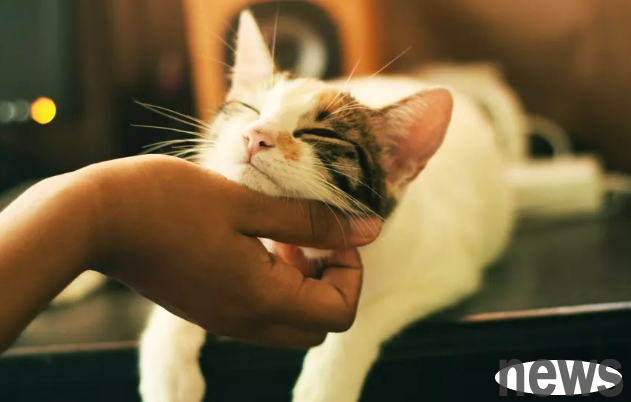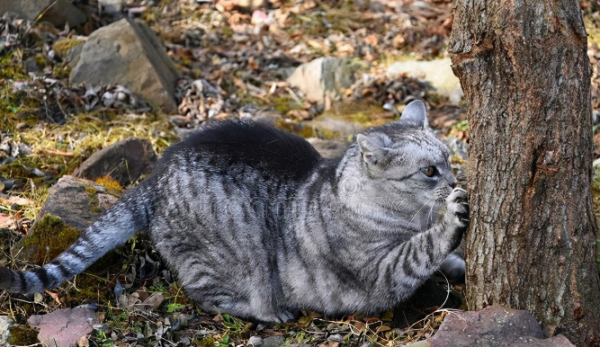Research has found that raising cats when you are young may have more than twice the risk of schizophrenia in the future
Toxoplasma gondii is a single-cell parasite, a gut coccidius of feline animals. The insect is distributed worldwide. About 25% of humans around the world have been infected. The positive infection rate in China is 5%-20%, and more than 30% in some areas.
Toxoplasma gondii infection can lead to congenital birth defects, blindness and neurological dysfunction in unborn children. For immune-depressed adults, it can lead to blindness and even death.

When it comes to Toxoplasma gondii, people may first think of cats. Cat feces and cat litter are the main reasons why Toxoplasma gondii infect humans.
Recently, researchers from the University of Queensland, Australia published a research paper titled "Cat Ownership and Schizophrenia-Related Disorders and Psychotic-Like Experiences: A Systematic Review and Meta-Analysis" in the journal "Schizophrenia Bulletin".
The study shows that raising cats in early years may be related to the risk of schizophrenia in the future.
In this study, the researchers searched the literature between January 1, 1980 and May 30, 2023, and meta-analysed 17 studies from 11 countries, analyzing the relationship between cat raising and schizophrenia.
The study found that raising cats in early years increased the risk of schizophrenia later.
Specifically, compared with people who have never been in contact with cats, raising cats before the age of 25 is 2.35 times higher in the future.
After adjusting for other factors, it was found that compared with those who had never been in contact with cats, the risk of schizophrenia in the future was 2.24 times higher than that of people who had not been in contact with cats.
The researchers said that although other early studies have shown that childhood exposure to cats may increase the risk of schizophrenia-related diseases, these studies did not determine the exact age or specific time range of exposure to cats.
researchers stressed that the critical time window for exposure needs to be more accurate and the time window for finding the highest risk of schizophrenia associated with cat contact in adolescents, thereby avoiding contact with cats during this time.

For risk mechanisms, researchers believe that the overall risk trend focuses on the interaction between the developing brain and Toxoplasma exposure.
In summary, the findings support the association between early exposure to cats and later increased risk of schizophrenia-related diseases, suggesting that cat raising is a major risk factor for schizophrenia.
Historically, cats have been associated with death and afterlife in many cultures. Ancient Egyptians believed that cats were sacred animals and were related to the goddess Buster, a symbol of family, fertility and protector. However, in some myths and legends, cats are also regarded as guardians who guard the dead into the afterlife. Therefore, in some cultures, cats are considered unlucky animals, associated with death and doom.
This cultural concept has affected people's beliefs and behaviors to a certain extent. In some countries and regions, people believe that cats can sense human death and therefore stay away from dying people. They believe that if a cat is close to a dying person, it may accelerate death or bring misfortune.
Although there is no scientific evidence to support this view, some people still believe in this belief. They may think that keeping cats close at the last moments of human life may break the balance of some supernatural forces, or touch some unknown, invisible mysterious forces.
In addition, some people have proposed another explanation: in real life, few people will bring cats close to dying people, probably out of care and protection for cats. Since dying people may release special chemicals or energy, they are worried that this may negatively affect cat health.
In addition to the above views, there are some other statements and examples to explain why some people think that cats cannot get close to dying people. For example:
A widely circulated belief is that when humans die, their souls may stay near the body for a period of time. If a cat approaches at this time, it may touch these souls, causing the soul to be taken away or causing other supernatural phenomena. This belief is widely spread in some supernatural stories and folklore.
In some cultures, people believe that cats' eyes can see things that humans cannot see. Therefore, they believe that cats can sense signs of imminent death in humans and choose to stay away to avoid signs of inauspiciousness.
There is also a view that because cats are often highly intuitive and sensitive, they may be able to perceive changes in the human body and subtle physiological changes. Although this view lacks scientific support, some people still believe that cats can perceive human death in advance.
To sum up, there are many explanations and opinions on the topic of "Why can't cats get close to dying people". Some people think it is based on scientific and logical reasoning, while others stick to the inheritance of beliefs and cultural traditions. Whichever explanation is more accurate or reasonable, it is important to respect everyone's perspective and cultural background. At the same time, we should also realize that for those who are on the verge of death, the most important thing is to provide care and support, rather than being bound by superstition.




